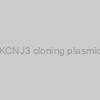Bradyarrhythmia is a standard medical manifestation. Though nearly all of instances are acquired, genetic evaluation of households with bradyarrhythmia has recognized a rising variety of causative gene mutations. As a result of the one final remedy for symptomatic bradyarrhythmia has been invasive surgical implantation of a pacemaker, the invention of novel therapeutic molecular targets is important to enhance prognosis and high quality of life.
We investigated a household containing 7 people with autosomal dominant bradyarrhythmias of sinus node dysfunction, atrial fibrillation with sluggish ventricular response, and atrioventricular block. To determine the causative mutation, we performed the family-based complete exome sequencing and genome-wide linkage evaluation.
We characterised the mutation-related mechanisms primarily based on the pathophysiology in vitro. After producing a transgenic animal mannequin to substantiate the human phenotypes of bradyarrhythmia, we additionally evaluated the efficacy of a newly recognized molecular-targeted compound to upregulate coronary heart charge in bradyarrhythmias through the use of the animal mannequin.
Overexpression of KCNJ3 gene splice variants impacts very important parameters of the malignant breast most cancers cell line MCF-7 in an opposing method.
Overexpression the KCNJ3, a gene that encodes subunit 1 of G-protein activated inwardly rectifying Ok(+) channel (GIRK1) within the main tumor has been discovered to be related to diminished survival instances and elevated lymph node metastasis in breast most cancers sufferers.
So as to survey attainable tumorigenic properties of GIRK1 overexpression, a variety of malignant mammary epithelial cells, primarily based on the MCF-7 cell line that completely overexpress completely different splice variants of the KCNJ3 gene (GIRK1a, GIRK1c, GIRK1d and as a management, eYFP) had been produced. Subsequently, chosen cardinal neoplasia related mobile parameters had been assessed and in contrast.
Adhesion to fibronectin coated floor in addition to cell proliferation remained unaffected. Different very important parameters intimately linked to malignancy, i.e. wound therapeutic, chemoinvasion, mobile velocities / motilities and angiogenesis had been massively affected by GIRK1 overexpression. Overexpression of various GIRK1 splice variants exerted differential actions.
Whereas GIRK1a and GIRK1c overexpression strengthened the affected parameters in the direction of malignancy, overexpression of GIRK1d resulted within the reverse. Single channel recording utilizing the patch clamp method revealed purposeful GIRK channels within the plasma membrane of MCF-7 cells albeit at very low frequency.
We conclude that GIRK1d acts as a dominant detrimental constituent of purposeful GIRK complexes current within the plasma membrane of MCF-7 cells, whereas overexpression of GIRK1a and GIRK1c augmented their exercise. The core element chargeable for the cancerogenic motion of GIRK1 is outwardly offered by a phase comprising aminoacids 235-402, that’s current solely in GIRK1a and GIRK1c, however not GIRK1d (positions in line with GIRK1a main construction).
The present examine offers perception into the mobile and molecular penalties of KCNJ3 overexpression in breast most cancers cells and the mechanism upon medical consequence in sufferers affected by breast most cancers.
KCNJ3 is a brand new impartial prognostic marker for estrogen receptor constructive breast most cancers sufferers.
Quite a few research confirmed irregular expression of ion channels in numerous most cancers sorts. Amongst these, the potassium channel gene KCNJ3 (encoding for GIRK1 proteins) has been reported to be upregulated in tumors of sufferers with breast most cancers and to correlate with constructive lymph node standing.
We aimed to review KCNJ3 ranges in numerous breast most cancers subtypes utilizing gene expression knowledge from the TCGA, to validate our findings utilizing RNA in situ hybridization in a validation cohort (GEO ID GSE17705), and to review the prognostic worth of KCNJ3using survival evaluation.
In a complete of>> 1000 breast most cancers sufferers of two impartial knowledge units we confirmed a) that KCNJ3 expression is upregulated in tumor tissue in comparison with corresponding regular tissue (p < 0.001), b) that KCNJ3 expression is related to estrogen receptor (ER) constructive tumors (p < 0.001), however that KCNJ3 expression is variable inside this group, and c) that ER constructive sufferers with excessive KCNJ3 ranges have worse general (p < 0.05) and illness free survival possibilities (p < 0.01), whereby KCNJ3 is an impartial prognostic issue (p <0.05).
In conclusion, our knowledge recommend that sufferers with ER constructive breast most cancers is perhaps stratified into excessive danger and low danger teams primarily based on the KCNJ3 ranges within the tumor.
Important analysis of KCNJ3 gene product detection in human breast most cancers: mRNA in situ hybridisation is superior to immunohistochemistry.
Elevated expression ranges of KCNJ3 have been correlated with lymph node metastases and poor prognosis in sufferers with breast most cancers, suggesting a prognostic function of KCNJ3 We aimed to ascertain protocols for the detection of KCNJ3 in formalin-fixed, paraffin-embedded (FFPE) breast most cancers tissue.
A number of antibodies had been examined for sensitivity and specificity by western blot, adopted by optimisation of the immunohistochemistry (IHC) process and institution of KCNJ3 mRNA in situ hybridisation (ISH). Strategies had been validated by processing 15 FFPE breast most cancers samples for which microarray knowledge had been obtainable.
Spearman’s rank correlation evaluation resulted in borderline important correlation for IHC versus ISH (rS: 0.625; p<0.05) and IHC versus microarray (rS: 0.668; p<0.01), however in important correlation for ISH versus microarray (rS: 0.861; p<0.001). The ISH methodology was superior to IHC, relating to robustness, sensitivity and specificity and can assist to additional examine expression ranges of KCNJ3 in each malignant and physiological situations.
Prenatal protein malnutrition decreases KCNJ3 and 2DG exercise in rat prefrontal cortex.
Prenatal protein malnutrition (PPM) in rats causes enduring modifications in mind and habits together with elevated cognitive rigidity and decreased inhibitory management. A preliminary gene microarray display screen of PPM rat prefrontal cortex (PFC) recognized alterations in KCNJ3 (GIRK1/Kir3.1), a gene essential for regulating neuronal excitability.
Observe-up with polymerase chain response and Western blot confirmed decreased KCNJ3 expression within the PFC, however not hippocampus or brainstem. To confirm localization of the impact to the PFC, baseline regional mind exercise was assessed with (14)C-2-deoxyglucose.
Outcomes confirmed decreased activation within the PFC however not hippocampus. Collectively these findings level to the distinctive vulnerability of the PFC to the dietary insult throughout early mind improvement, with enduring results in maturity on KCNJ3 expression and baseline metabolic exercise.
Affiliation examine of the KCNJ3 gene as a susceptibility candidate for schizophrenia within the Chinese language inhabitants.
We not too long ago reported the outcomes of a genome-wide affiliation examine (GWAS) of schizophrenia within the Japanese inhabitants. In that examine, a single nucleotide polymorphism (SNP) (rs3106653) within the KCNJ3 (potassium inwardly rectifying channel, subfamily J, member 3) gene situated at 2q24.1 confirmed affiliation with schizophrenia in two impartial pattern units.
KCNJ3, additionally termed GIRK1 or Kir3.1, is a member of the G protein-activated inwardly rectifying Ok(+) channel (GIRK) group. GIRKs are extensively distributed within the mind and play an essential function in regulating neural excitability by the activation of varied G protein-coupled receptors. On this examine, we got down to study this affiliation utilizing a special inhabitants.
We first carried out a gene-centric affiliation examine of the KCNJ3 gene, by genotyping 38 tagSNPs within the Chinese language inhabitants. We detected 9 SNPs that displayed important affiliation with schizophrenia (lowest P = 0.0016 for rs3106658, International significance = 0.036). The preliminary marker SNP (rs3106653) examined in our prior GWAS within the Japanese inhabitants additionally confirmed nominally important affiliation within the Chinese language inhabitants (P = 0.028).
 KCNJ3 antibody |
|
10R-4516 |
Fitzgerald |
100 ul |
EUR 709 |
|
|
|
Description: Mouse monoclonal KCNJ3 antibody |
 KCNJ3 antibody |
|
10R-7004 |
Fitzgerald |
100 ul |
EUR 709 |
|
|
|
Description: Mouse monoclonal KCNJ3 antibody |
 KCNJ3 antibody |
|
10R-7006 |
Fitzgerald |
100 ul |
EUR 709 |
|
|
|
Description: Mouse monoclonal KCNJ3 antibody |
 KCNJ3 antibody |
|
10R-7007 |
Fitzgerald |
100 ul |
EUR 709 |
|
|
|
Description: Mouse monoclonal KCNJ3 antibody |
 KCNJ3 Antibody |
|
E309371 |
EnoGene |
200ul |
EUR 275 |
|
Description: Available in various conjugation types. |
 KCNJ3 Antibody |
|
1-CSB-PA010515 |
Cusabio |
-
Ask for price
-
Ask for price
|
|
|
|
|
Description: A polyclonal antibody against KCNJ3. Recognizes KCNJ3 from Human, Mouse, Rat. This antibody is Unconjugated. Tested in the following application: WB, IF, ELISA;WB:1/500-1/2000.IF:1/200-1/1000.ELISA:1/20000 |
 KCNJ3 Antibody |
|
1-CSB-PA012056LA01HU |
Cusabio |
-
Ask for price
-
Ask for price
|
|
|
|
|
Description: A polyclonal antibody against KCNJ3. Recognizes KCNJ3 from Human. This antibody is Unconjugated. Tested in the following application: ELISA, IHC, IF; Recommended dilution: IHC:1:20-1:200, IF:1:50-1:200 |
 KCNJ3 Rabbit pAb |
|
A12455-100ul |
Abclonal |
100 ul |
EUR 369.6 |
 KCNJ3 Rabbit pAb |
|
A12455-200ul |
Abclonal |
200 ul |
EUR 550.8 |
 KCNJ3 Rabbit pAb |
|
A12455-20ul |
Abclonal |
20 ul |
EUR 219.6 |
 KCNJ3 Rabbit pAb |
|
A12455-50ul |
Abclonal |
50 ul |
EUR 267.6 |
 KCNJ3 Rabbit pAb |
|
A9824-100ul |
Abclonal |
100 ul |
EUR 369.6 |
 KCNJ3 Rabbit pAb |
|
A9824-200ul |
Abclonal |
200 ul |
EUR 550.8 |
 KCNJ3 Rabbit pAb |
|
A9824-20ul |
Abclonal |
20 ul |
EUR 219.6 |
 KCNJ3 Rabbit pAb |
|
A9824-50ul |
Abclonal |
50 ul |
EUR 267.6 |
 anti- KCNJ3 antibody |
|
FNab04492 |
FN Test |
100µg |
EUR 606.3 |
|
|
|
Description: Antibody raised against KCNJ3 |
 KCNJ3 cloning plasmid |
|
CSB-CL012056HU-10ug |
Cusabio |
10ug |
EUR 451.2 |
|
|
|
Description: A cloning plasmid for the KCNJ3 gene. |
 KCNJ3 Polyclonal Antibody |
|
27699 |
SAB |
100ul |
EUR 439 |
 KCNJ3 Polyclonal Antibody |
|
27699-100ul |
SAB |
100ul |
EUR 302.4 |
 KCNJ3 Polyclonal Antibody |
|
27699-50ul |
SAB |
50ul |
EUR 224.4 |
 KCNJ3 Polyclonal Antibody |
|
31746 |
SAB |
100ul |
EUR 439 |
 KCNJ3 Polyclonal Antibody |
|
31746-100ul |
SAB |
100ul |
EUR 302.4 |
 KCNJ3 Polyclonal Antibody |
|
31746-50ul |
SAB |
50ul |
EUR 224.4 |
 KCNJ3 Polyclonal Antibody |
|
E99824 |
EnoGene |
100ul |
EUR 225 |
|
Description: Available in various conjugation types. |
 KCNJ3 Polyclonal Antibody |
|
E912455 |
EnoGene |
100ul |
EUR 225 |
|
Description: Available in various conjugation types. |
 KCNJ3 Polyclonal Antibody |
|
E-AB-92991-120uL |
Elabscience Biotech |
120uL |
EUR 320 |
|
|
|
Description: Unconjugated |
 KCNJ3 Polyclonal Antibody |
|
E-AB-92991-200uL |
Elabscience Biotech |
200uL |
EUR 530 |
|
|
|
Description: Unconjugated |
 KCNJ3 Polyclonal Antibody |
|
E-AB-92991-60uL |
Elabscience Biotech |
60uL |
EUR 200 |
|
|
|
Description: Unconjugated |
 KCNJ3 Polyclonal Antibody |
|
E-AB-92991-each |
Elabscience Biotech |
each |
Ask for price |
|
|
|
Description: Unconjugated |
 KCNJ3 Polyclonal Antibody |
|
E-AB-90420-120uL |
Elabscience Biotech |
120uL |
EUR 320 |
|
|
|
Description: Unconjugated |
 KCNJ3 Polyclonal Antibody |
|
E-AB-90420-200uL |
Elabscience Biotech |
200uL |
EUR 530 |
|
|
|
Description: Unconjugated |
 KCNJ3 Polyclonal Antibody |
|
E-AB-90420-60uL |
Elabscience Biotech |
60uL |
EUR 200 |
|
|
|
Description: Unconjugated |
 KCNJ3 Polyclonal Antibody |
|
E-AB-90420-each |
Elabscience Biotech |
each |
Ask for price |
|
|
|
Description: Unconjugated |
Subsequent, we analyzed transcript ranges within the dorsolateral prefrontal cortex of postmortem brains from sufferers with schizophrenia and bipolar dysfunction and from wholesome controls, utilizing real-time quantitative RT-PCR. We discovered considerably decrease KCNJ3 expression in postmortem brains from schizophrenic and bipolar sufferers in contrast with controls. These knowledge recommend that the KCNJ3 gene is genetically related to schizophrenia in Asian populations and add additional proof to the “channelopathy principle of psychiatric sicknesses”.




